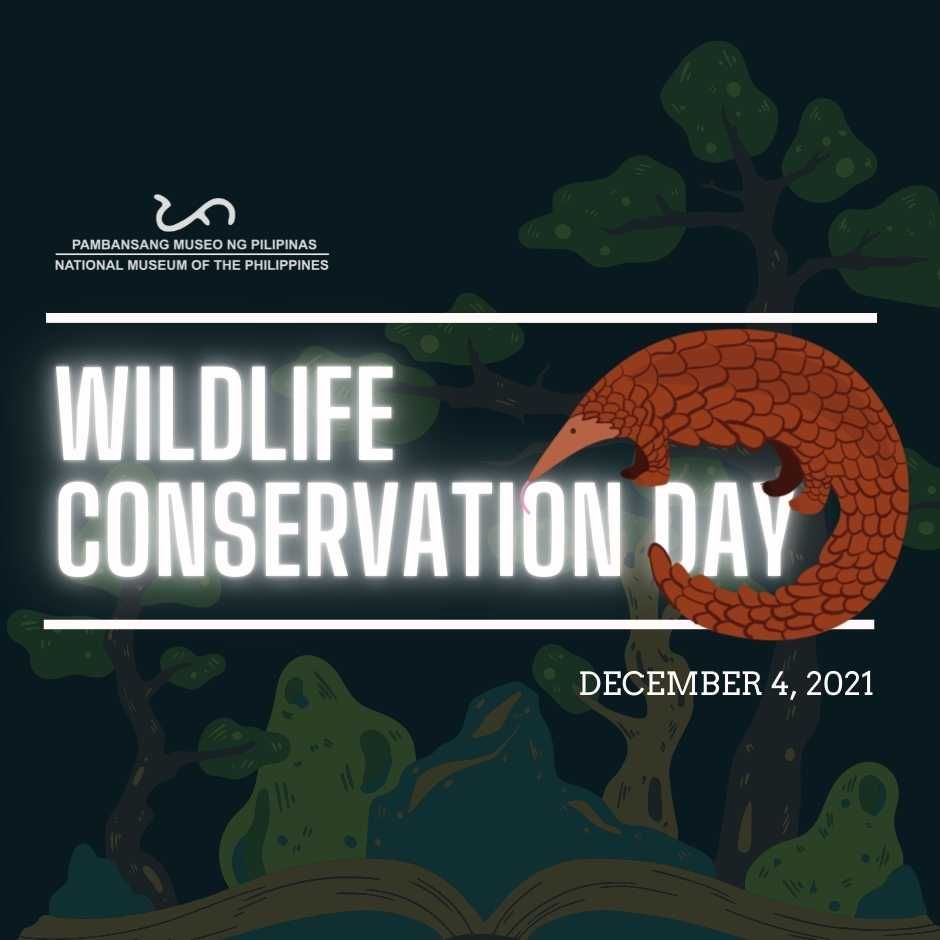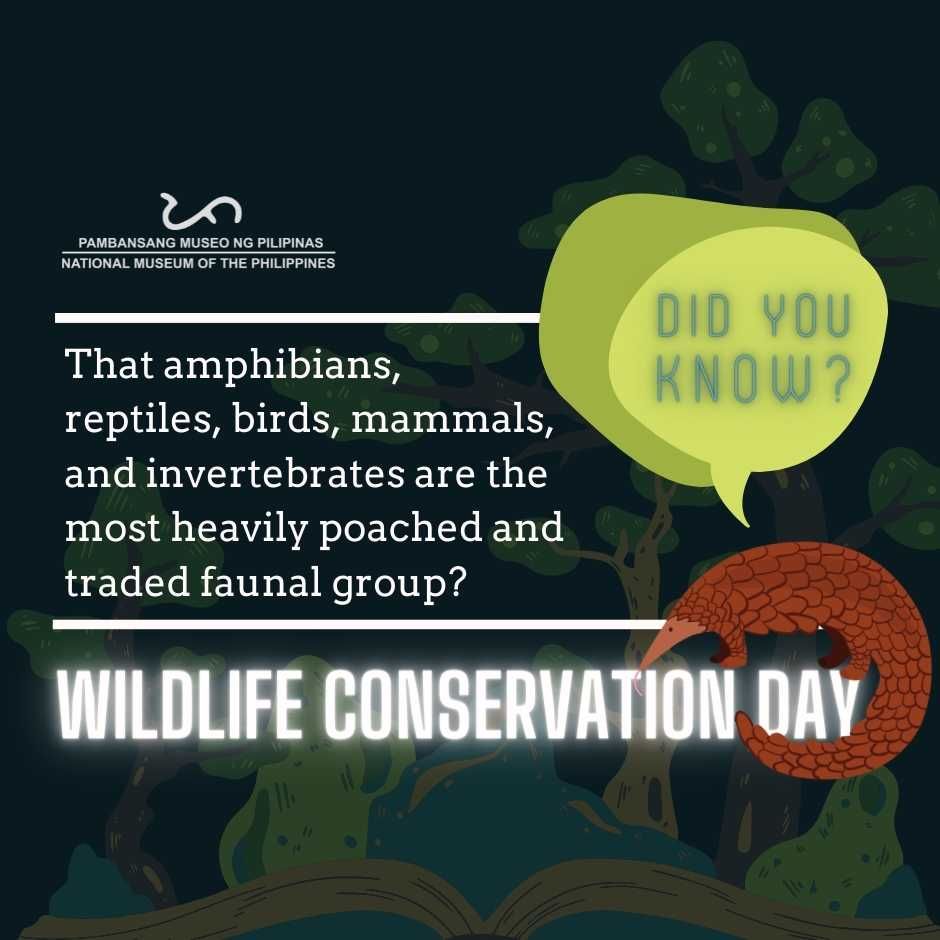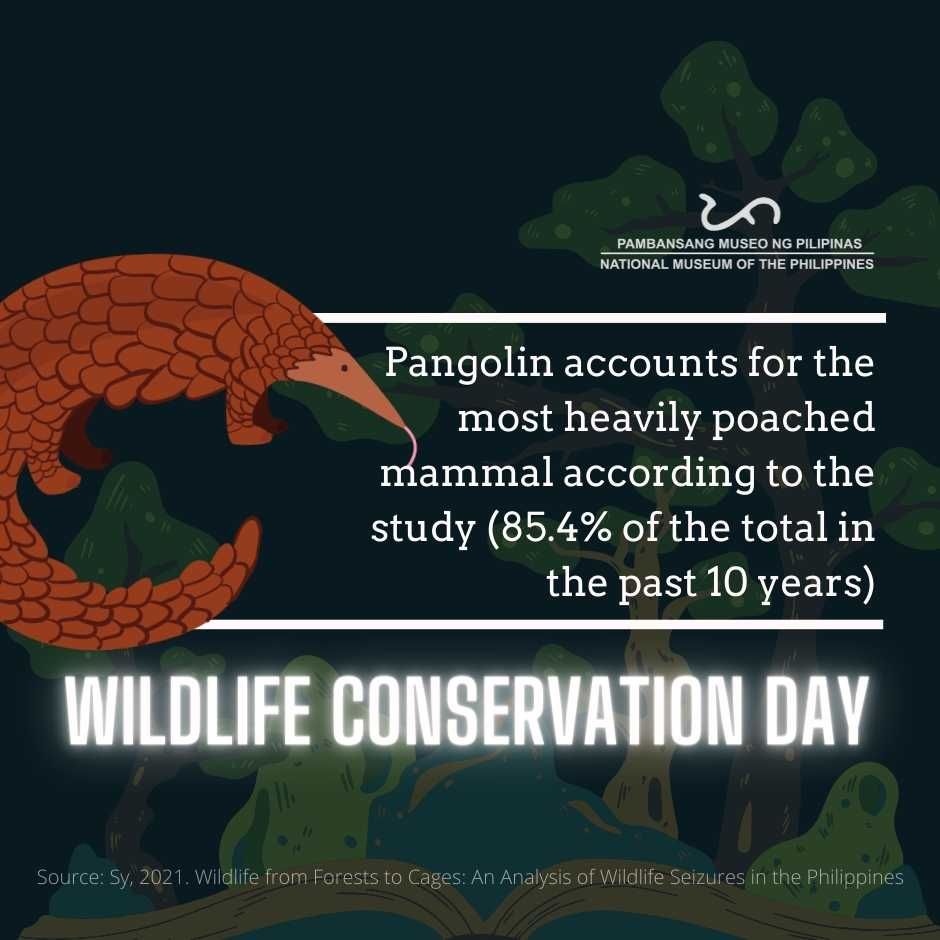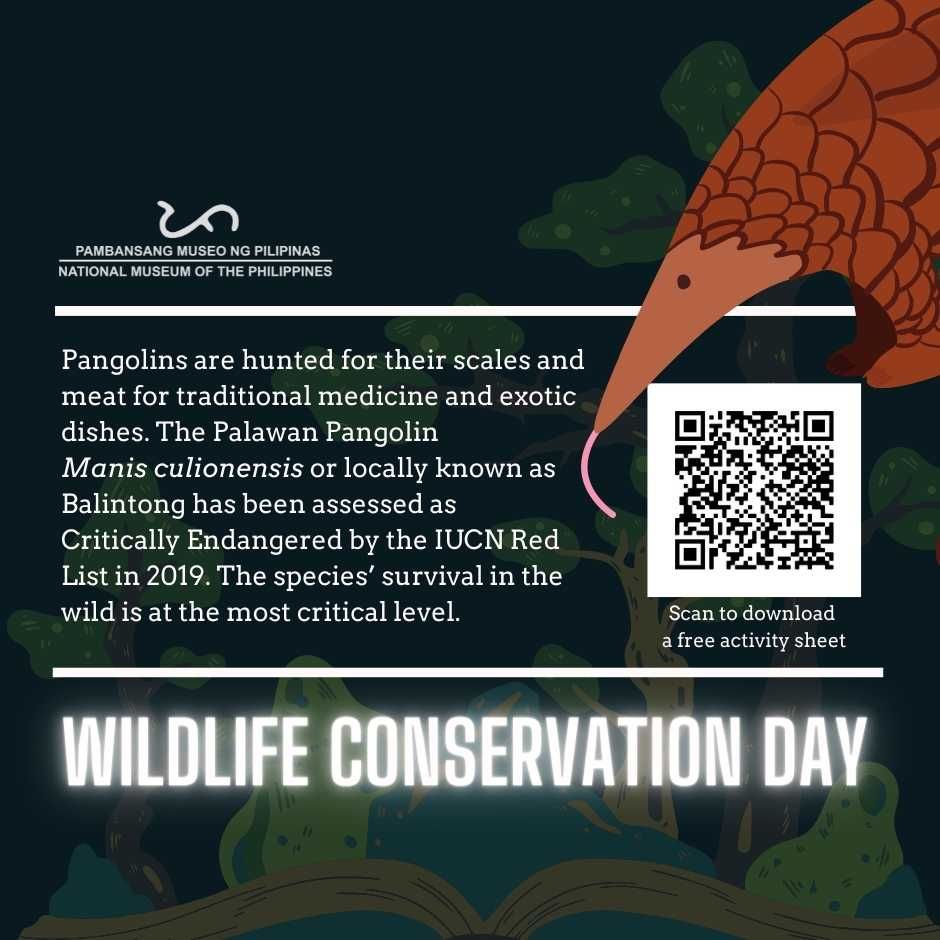WORLD WILDLIFE CONSERVATION DAY 2021
Today is WORLD WILDLIFE CONSERVATION DAY 2021!
#WorldWildlifeConservationDay is observed to spread awareness on the plight of our voiceless and defenseless wildlife. Let us look at one of the drivers of species extinction – the illegal wildlife trade. Considered a transnational crime, the illegal wildlife trade is one of the most profitable illicit businesses in the world.
According to a study conducted by Emerson Sy from 2010 to 2019, the top faunal group that is heavily poached and traded are amphibians, reptiles, birds, mammals, and invertebrates. Unfortunately, the Philippines is one of the trade routes. The animals are captured to be sold off as pets, food, and used for traditional medicine. One of these animals is the pangolin.
Pangolin accounts for the most heavily poached mammal according to the study (85.4% of the total seized mammals during 10 years). Pangolins are hunted for their scales and meat for traditional medicine and exotic dishes. We are not just talking about the Palawan pangolin, but other pangolin species in the world, regardless of size and age.
The Palawan Pangolin (Manis culionensis) or locally known as Balintong has been assessed as Critically Endangered by the IUCN Red List in 2019. The species’ survival in the wild is at the most critical level.
According to the Wildlife Resources Conservation and Protection Act of 2001 or Republic Act No. 9147, the killing, inflicting injury, introduction, trade, collection, hunting, possessing, gathering, maltreating, and transporting of wildlife without permits is prohibited and punishable by law. Violators may face a fine of up to PhP 1,000,000.00 and imprisonment of up to 12 years.
Pangolins are only one of the many species affected by the illegal wildlife trade. Let us all be vigilant in our fight against these environmental and conservation threats by reporting to #DENR or #3367 from anywhere within the Philippines. You may also call 0917-868-DENR or 0917-885-DENR.
#NationalMuseumPH
#WildlifeConservationDay
Text and images from NMP Zoology Division
inquiry@nationalmuseum.gov.ph
(+632) 8298-1100




